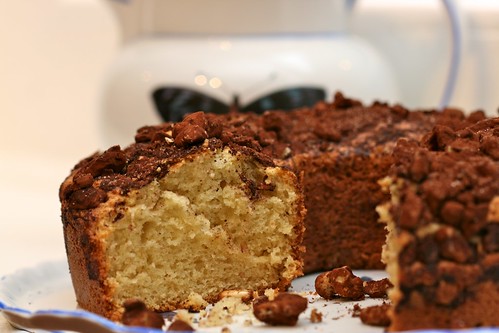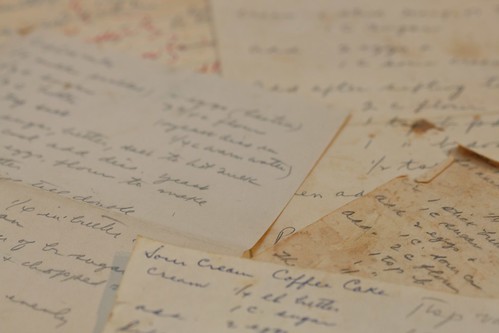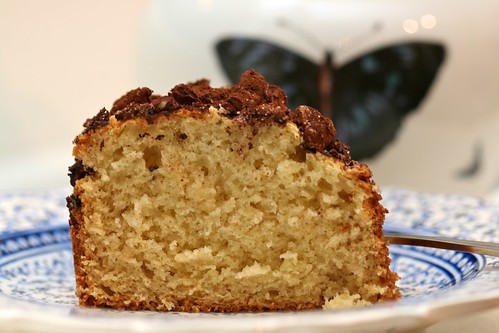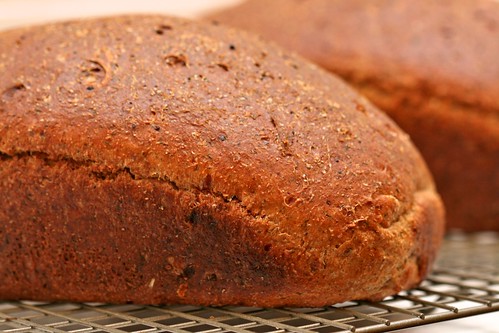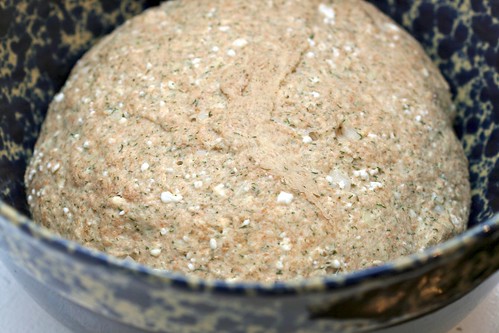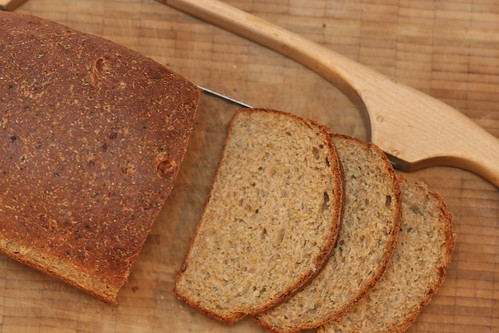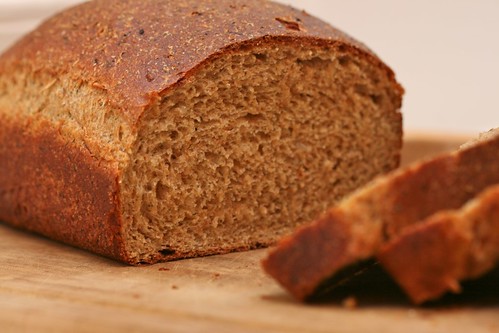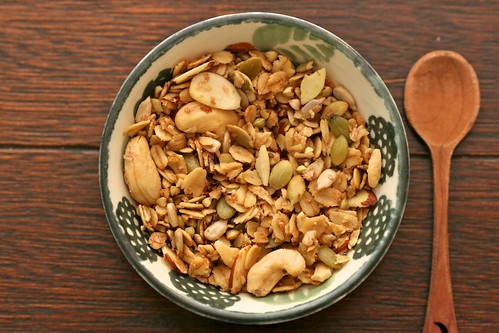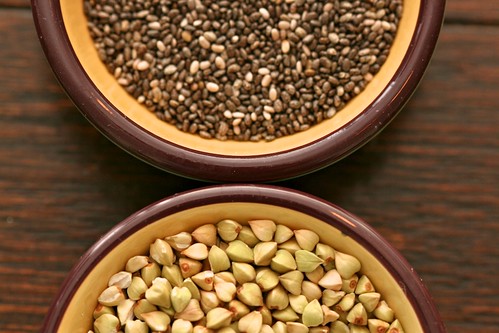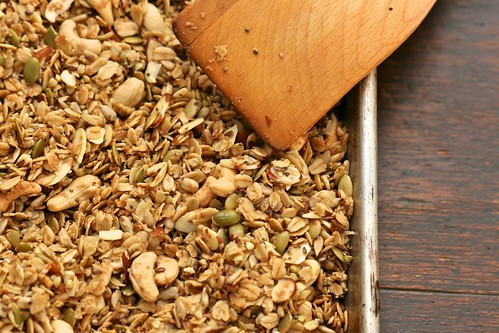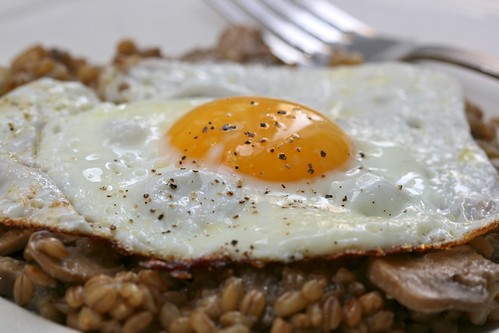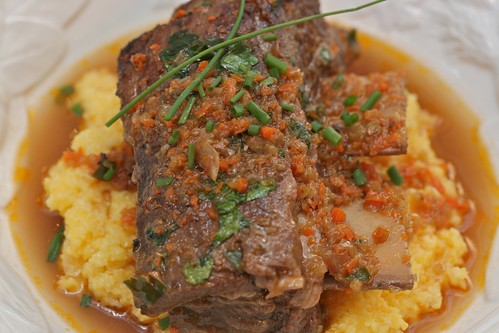My grandma Ruth's recipe box, spent years sitting in my father's attic after it left Ruth's kitchen. I was up there sorting through forgotten treasures when I found it packed in a box along with some of her old knitting needles and a collection of buttons. I pried opened the stiff green lid and stared at the contents in awe. I remember thinking it was better than discovering a cache of jewels. I took it with me and stored it away for safekeeping.
Last week I had a bad case of the winter blues, and called my sister for counsel. "Dig deep into that box and make something amazing," she said. I knew she was right. Often to cope, it means digging deep. Seeing the positive again. Breathing life into the day. I wonder how Ruth was at that.
This story does not end here, with a slice of moist cake and a cozy cup of tea. Out of six coffee cake recipes, I chose the one that one that sounded the most interesting-- a yeasted coffee cake with butter, sugar and nuts on the bottom. An hour later, instead of a sugary aroma wafting from my oven, there was smoke. The butter and sugar melted and dripped through the detachable bottom of the tube pan, making a sticky mess of my oven. Over the next two days, there were two more coffee cakes and I was scrambling to pull dinner together. I was thoroughly distracted and feeling much better.
By day three, I was all business. I spread all six of Ruth's coffee cake recipes out in front of me. Ruth had obviously tested and retested these. There were pencil marks, edits and spills. She must have been pretty serious about her coffee cake. What had she done with all that cake?
In the end, I settled on Ruth's basics. Butter, sugar, full-fat sour cream. Nothing fancy, a simple topping. The third time was a charm. By the end of the weekend, my supply of butter, eggs and sugar was gone. Two sad cakes lay like sunken ships at the bottom of my trash can. Along with one superb coffee cake, I had honed my homemade coping mechanisms. That's one treasure that didn't come written on a recipe card.
Sour Cream Coffee Cake
1 stick of butter, softened
1 cup sugar
2 large eggs
1 teaspoon vanilla
1 cup sour cream
2 cups flour
1/4 teaspoon salt
1 1/2 teaspoons baking powder
1 teaspoon baking soda
Topping
1/4 cup sugar
2 teaspoons cinnamon
2 tablespoons cocoa
1/2 cup to 1 cup chopped walnuts
With an electric mixer, cream the sugar with the butter. Add one egg at a time and the vanilla, and mix again. Stir in the sour cream. Sift the flour, salt, baking powder and baking soda, then stir that into the wet ingredients. Butter a tube pan, distribute the batter evenly into the pan and then top with the topping mixture. Bake at 350 degrees for about 40 minutes or until a tooth pick comes out clean. Best enjoyed within two days.

